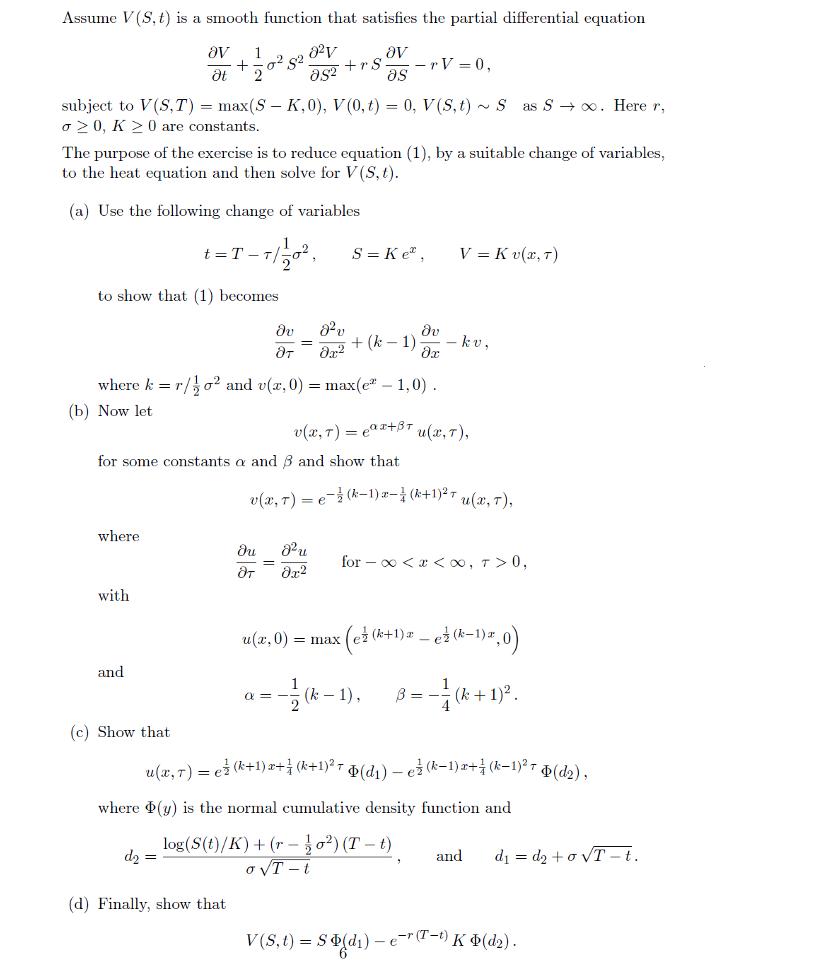Answered step by step
Verified Expert Solution
Question
1 Approved Answer
Assume V(S, t) is a smooth function that satisfies the partial differential equation 1 + +r S as? -rV = 0, as subject to

Assume V(S, t) is a smooth function that satisfies the partial differential equation 1 + +r S as? -rV = 0, as subject to V(S,T) = max(S K,0), V(0, t) = 0, V(S, t) - S as S 0. Here r, o 2 0, K >0 are constants. The purpose of the exercise is to reduce equation (1), by a suitable change of variables, to the heat equation and then solve for V(S, t). (a) Use the following change of variables t = T - S = K e", V = K v(x, 7) to show that (1) becomes dv dv - kv, + (k 1) dx where k = r/}o? and v(x, 0) = max(e" 1,0). (b) Now let v(x, 7) = ear+3T u(x, 7), for so constants a and 8 and show that v(x, T) = e (k-1) *- (k+1)7 u(x, 7), where du for 0 < a 0, with u(x.0) = max (et(*+1)= - et (k-1)=,0) and = - (k 1), B = (c) Show that u(x, 7) = ez (k+1) r+ (k+1)? r (d1)- e (k-1)r+ (k-1)?r (d). where (y) is the normal cumulative density function and log(S(t)/K) + (r -) (T t) o VT - t d2 = di = d2 +o VT t. and (d) Finally, show that V(S, t) = S -E=r(T-t) K (d2).
Step by Step Solution
★★★★★
3.46 Rating (179 Votes )
There are 3 Steps involved in it
Step: 1
Pailial dibbential Eamatiany Arsime VSA is the PDE dundiom the...
Get Instant Access to Expert-Tailored Solutions
See step-by-step solutions with expert insights and AI powered tools for academic success
Step: 2

Step: 3

Ace Your Homework with AI
Get the answers you need in no time with our AI-driven, step-by-step assistance
Get Started


